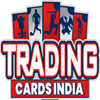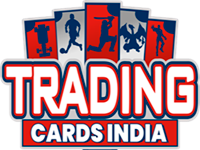Sign In
Create an account
Reset password
- Home
- Sets
Kayou cards
Product Types
Shop Styles
Shop Inner Pages
Product Styles
Halloween Party Get 50% Discount
Enjoy increased flexibility and get the performance you need with
Before $20.00 /mo
Now $9.99 /mo
- About us
- Contact us
- Blog
Pokémon Cards: A Timeless Hobby
Whether you’re a nostalgic 90s kid, a competitive TCG (Trading Card Game) player, or a modern-day collector riding the wave of rare card hype, Pokémon cards have likely played a role in your life. What started as a simple trading card game over two decades ago has become one of the most iconic and valuable collectibles in the world.
In this blog, we’ll explore the history, culture, value, and enduring appeal of Pokémon cards — and why now might be the best time to jump (back) into the world of pocket monsters.
🎴 The Origins: From Pixels to Paper
Pokémon began as a Game Boy title in Japan in 1996. It quickly exploded in popularity, spawning an anime, toys, movies — and of course, the Pokémon Trading Card Game (TCG). The first Pokémon cards were released in Japan in 1996 by Media Factory, and in the West by Wizards of the Coast in 1999.
The early sets — Base Set, Jungle, Fossil, and Team Rocket — introduced fans to a tangible way of collecting their favorite Pokémon, from Charizard to Pikachu. The combination of nostalgic artwork, game mechanics, and the thrill of opening booster packs cemented Pokémon cards as a global obsession.
🔥 Why People Love Pokémon Cards
Pokémon cards aren’t just pieces of paper. They’re emotional tokens, pieces of art, and investments. Here’s what keeps collectors and players coming back:
1. Nostalgia & Connection
Ask any millennial, and they’ll likely have a story about trading Pokémon cards during recess. For many, cards are a direct connection to childhood memories — and collecting them brings back the joy of simpler times.
2. Gameplay & Strategy
The Pokémon TCG isn’t just for collecting. It’s a competitive game with deep strategy and deck-building mechanics. From local tournaments to the Pokémon World Championships, the gameplay community is vibrant and global.
3. Art & Design
Pokémon cards are beautiful. With each new set, artists create unique illustrations that reflect both traditional and modern art styles. Special rarities like Full Art, Alternate Art, Rainbow Rare, and Gold Cards are masterpieces in themselves.
4. Rarity & Value
Yes, some Pokémon cards are worth a fortune. A 1st Edition Holographic Charizard can sell for hundreds of thousands of dollars. Other ultra-rare cards, like Trophy Pikachu, Illustrator Pikachu, or error cards, are coveted by elite collectors. Pokémon cards have become a legitimate alternative investment.
💰 Understanding Rarity and Value
Not all cards are created equal. If you’re new to collecting, here are the main factors that determine a card’s value:
Rarity Symbol: Common (●), Uncommon (◆), Rare (★), Ultra Rare, Secret Rare
Holofoil: Cards with holographic shine are often more desirable.
Edition: 1st Edition cards from the Base Set are among the most valuable.
Condition: Cards graded by PSA or Beckett in mint condition are worth significantly more.
Print Errors: Misprints or error cards are rare and often fetch high prices.
Popularity of the Pokémon: Charizard, Pikachu, Mewtwo, and Eevee evolutions are perennial favorites.
🗂️ The Modern Era of Pokémon Cards
Since 2020, the Pokémon TCG has seen a massive resurgence, partly fueled by:
YouTube and Twitch influencers opening rare packs
High-profile auctions (Logan Paul’s Charizard card ring a bell?)
COVID-era hobby revival as people sought new ways to engage at home
Recent sets like Evolving Skies, Celebrations, Crown Zenith, and Obsidian Flames have introduced incredible chase cards and collector-friendly designs. Pokémon even released special anniversary and collaboration sets to meet demand.
🛒 How to Start (or Restart) Your Collection
Whether you’re jumping in for the first time or rekindling an old passion, here’s how to get started smartly:
✅ Step 1: Pick Your Purpose
Casual collector? Go for tins, ETBs (Elite Trainer Boxes), and promos.
Competitive player? Focus on Standard-legal cards and build your deck.
Investor? Learn grading, sealed products, and long-term card value.
✅ Step 2: Buy From Trusted Sources
Buy from local game stores, official Pokémon retailers, or reputable online sellers. Watch out for fakes — the counterfeit market is unfortunately very active.
✅ Step 3: Store & Protect
Use sleeves, binders, and top loaders to protect your cards. For high-value cards, consider professional grading with PSA, BGS, or CGC.
✅ Step 4: Join the Community
Trade, battle, or just show off your pulls! Pokémon has a massive online and in-person community. Platforms like Reddit, Discord, and Instagram are great places to connect with other fans.
🚀 The Future of Pokémon Cards
With new generations, regional forms, and anniversary sets on the horizon, Pokémon shows no signs of slowing down. The franchise continues to evolve with innovative designs, digital integrations like Pokémon TCG Live, and even crossovers with other brands.
What began as a childhood passion has become a multi-generational legacy, blending pop culture, art, competition, and investment.
🎯 Final Thoughts
Pokémon cards are more than collectibles — they’re cultural artifacts. Each card tells a story, sparks a memory, or represents a victory in battle. Whether you’re in it for the nostalgia, the art, or the potential investment, one thing is certain: the magic of Pokémon is here to stay.
Copyright 2025. Maintain by Osfilling Pvt Ltd
- Home
- Sets
Kayou cards
Product Types
Shop Styles
Shop Inner Pages
Product Styles
Halloween Party Get 50% Discount
Enjoy increased flexibility and get the performance you need with
Before $20.00 /mo
Now $9.99 /mo
- About us
- Contact us
- Blog

